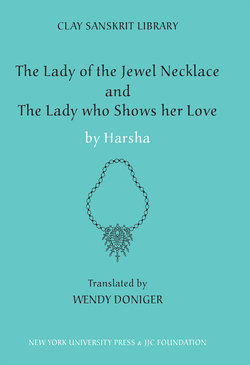Читать книгу The Lady of the Jewel Necklace & The Lady who Shows her Love - Harsha - Страница 15
На сайте Литреса книга снята с продажи.
ОглавлениеDid Harsha Write These Plays?
Tradition ascribes both ‘The Lady of the Jewel Necklace’ (Ratnavali) and ‘The Lady who Shows her Love’ (Priya/darsika), as well as ‘How the Nagas were Pleased,’ to Harsha (Kale 1921: xvii). But Mammata’s ‘Illumination of Poetry’ (Kavya/prakasa), in the early eleventh century, notes that Harsha gave a great deal of money to Bana, and this is the source of the long-standing rumor that Harsha paid Bana to ghost-write the plays for him (Levi 1963: 184–95). Further complications are added by the tendency to confuse this Harsha with either or both of two other Harshas, one of whom was a king (ruler of Kashmir between 1113 and 1124) and the other a poet (the author of the twelfth-century Naisadhiya/carita)—or could these be a single twelfth-century person, another poet-king named Harsha?
I am persuaded, however, that king Harsha really wrote the plays in this volume himself. After all, ancient India had a great many kings, and many of them employed first-rate poets at their courts. Yet Harsha is almost unique in claiming that he himself, rather than his court poet (in his case, Bana), wrote the three fine plays composed at his court. Moreover, ‘The Lady of the Jewel Necklace’ and ‘The Lady who Shows her Love’ are the sorts of plays a king might well write: the plots are full of political intrigue (which involve mistaken identities, both political and erotic, that are mirrored in the frequent use of paronomasia, extended double entendre). And though some of the poetry is quite good, refreshingly simple and straightforward (might one say commanding, or martial?), some of it—let’s be frank—is pretty dreadful (take a look at ‘The Lady of the Jewel Necklace’ 3.87 (verse ________
